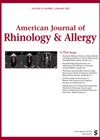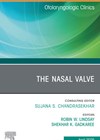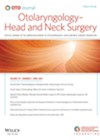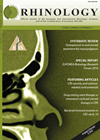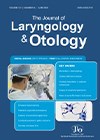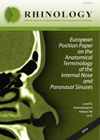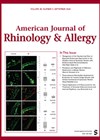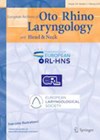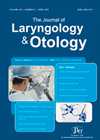
Journal Reviews
Posterior nasal neurectomy – long-term data shows tailing off of benefits but still improvement after three years
It is well understood that allergic rhinitis has a very detrimental effect on quality of life for afflicted patients. This study looks at patients with allergic rhinitis but no other associated sinonasal or respiratory diagnoses. Patients with a history of...
Congenitally anosmic patients do have fewer olfactory foramina
It has been previously established that patients with Kallman’s syndrome (very much associated with anosmia) have a similar number of cribriform plate foramina when compared to controls. As non-invasive CT assessment of the cribriform plate is now possible in cadavers,...
Saddle nose deformity repair – structured approach
We often come across saddle noses in our specialist rhinology clinics. The saddle nose deformity represents collapse of the cartilaginous and / or bony nasal support structures resulting in dorsal height loss. Acquired cases are due to trauma or surgery...
Temperature-controlled radiofrequency treatment of the nasal valve confers sustained benefit
Aiming to investigate long-term efficacy and safety (three years post treatment), this was an extension of a previous multicentre, prospective, single-blinded, randomised controlled trial that investigated the effectiveness and safety of temperature-controlled radiofrequency treatment (TCRF) to the nasal valve (NV)...
Patients with severe uncontrolled CRSwNP respond to biologics in the real world
Clinical trials have demonstrated that biologics are effective in treating patients with chronic rhinosinusitis with nasal polyps (CRSwNP). This multicentre (15 tertiary care centres in France) observational prospective cohort study aims to examine the effectiveness of biologics in treating CRSwNP...
Do intranasal corticosteroids resolve eustachian tube dysfunction?
Eustachian tube dysfunction is a widely prevalent problem, both in children and adults. In many ways, it affects the quality of life in terms of earaches, feeling of blockage and variable hearing. Use of intranasal corticosteroids is customary but whether...
Chronic rhinosinusitis update
There is still a lack of awareness of chronic rhinosinusitis (CRS) despite its burden, calling for events such as the recent Global Chronic Rhinosinusitis with Nasal Polyps (CRSwNP) Awareness Day. Research findings from recent publications by Backaert et al have...
A useful adjuvant treatment for SNAC or IP
5-Fluorouracil (5FU) is a topical preparation used in the treatment of various dermatological, ocular and gynaecologic malignant and pre-malignant conditions, and this literature review looks at the efficacy of 5FU in treating inverted papilloma and sinonasal tumours. The authors cite...
Intra orbital treatment to save the eye!
Invasive fungal sinusitis can be a devastating condition, and accepted management is surgical debridement of infected tissue, systemic antifungal treatment and reversal of immunosuppression. Orbital involvement is common, affecting up to 75% of cases, and in advanced disease orbital exenteration...
Tubomanometry in eustachian tube dysfunction
This prospective study evaluated the validity and reliability of tubomanometry (TMM) in 25 patients with sinus disease, 75 patients with middle ear disease and 25 healthy volunteers. After thorough clinical examination, the participants were evaluated with TMM, nasal endoscope, otoendoscope,...
A viable solution for isolated post-nasal drip?
This retrospective, single-centre case series looked at a cohort of patients with postnasal drip as their primary symptom. Exclusions were patients with chronic rhinosinusitis. The interventions offered were temperature-controlled radio frequency (TCRF) ablation of the posterior nasal nerve delivered by...
Factor favouring the need for revision FESS in chronic sinusitis with polyps – a multivariate analysis including phenotypes
Chronic rhinosinusitis with polyposis is a type 2 inflammation with risks of recurrence and need for revision operations. This is known to depend on the endotype and phenotype factors. This is a retrospective study of 212 patients. Of these, 112...

